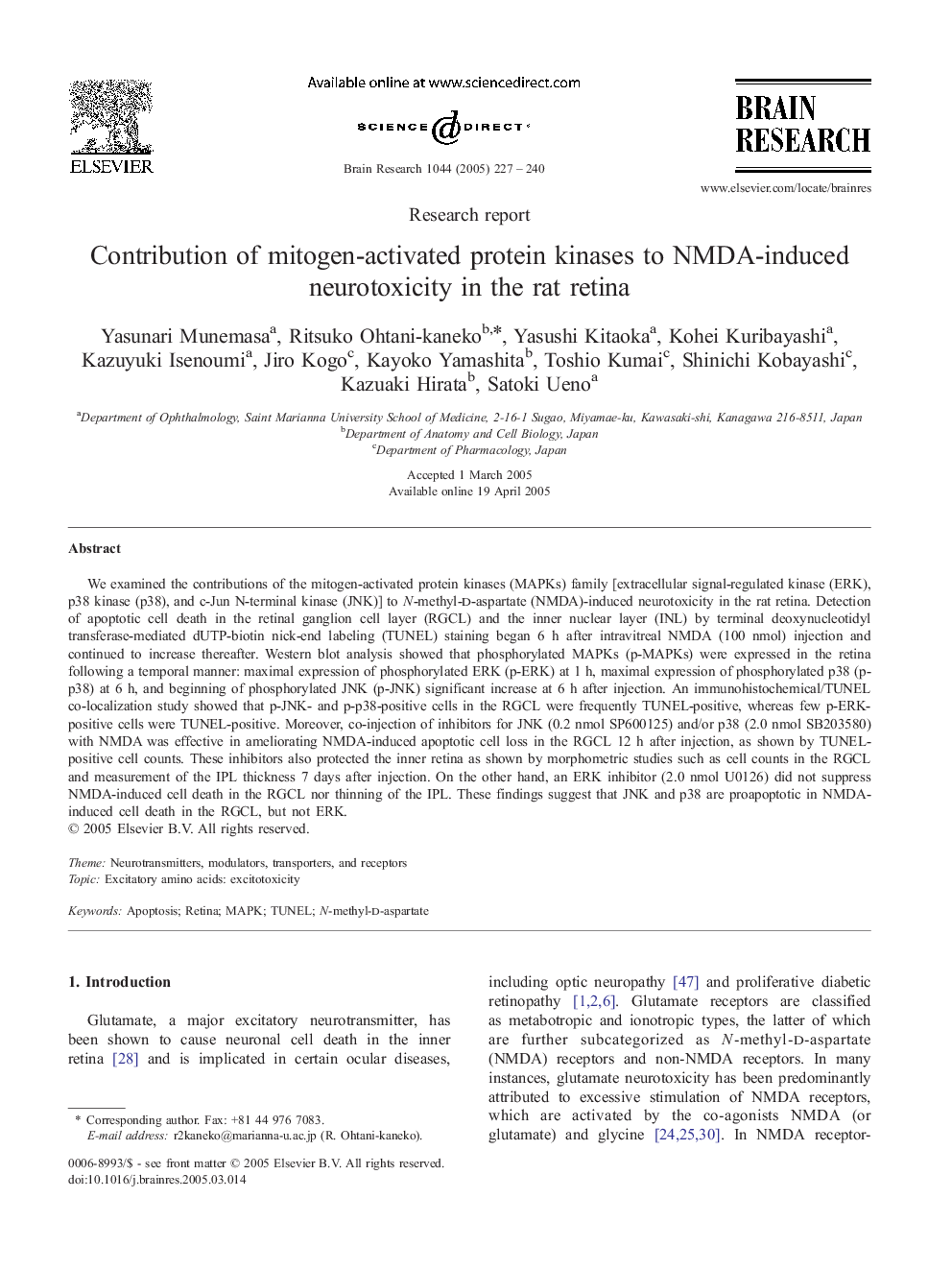| Article ID | Journal | Published Year | Pages | File Type |
|---|---|---|---|---|
| 9416318 | Brain Research | 2005 | 14 Pages |
Abstract
We examined the contributions of the mitogen-activated protein kinases (MAPKs) family [extracellular signal-regulated kinase (ERK), p38 kinase (p38), and c-Jun N-terminal kinase (JNK)] to N-methyl-d-aspartate (NMDA)-induced neurotoxicity in the rat retina. Detection of apoptotic cell death in the retinal ganglion cell layer (RGCL) and the inner nuclear layer (INL) by terminal deoxynucleotidyl transferase-mediated dUTP-biotin nick-end labeling (TUNEL) staining began 6 h after intravitreal NMDA (100 nmol) injection and continued to increase thereafter. Western blot analysis showed that phosphorylated MAPKs (p-MAPKs) were expressed in the retina following a temporal manner: maximal expression of phosphorylated ERK (p-ERK) at 1 h, maximal expression of phosphorylated p38 (p-p38) at 6 h, and beginning of phosphorylated JNK (p-JNK) significant increase at 6 h after injection. An immunohistochemical/TUNEL co-localization study showed that p-JNK- and p-p38-positive cells in the RGCL were frequently TUNEL-positive, whereas few p-ERK-positive cells were TUNEL-positive. Moreover, co-injection of inhibitors for JNK (0.2 nmol SP600125) and/or p38 (2.0 nmol SB203580) with NMDA was effective in ameliorating NMDA-induced apoptotic cell loss in the RGCL 12 h after injection, as shown by TUNEL-positive cell counts. These inhibitors also protected the inner retina as shown by morphometric studies such as cell counts in the RGCL and measurement of the IPL thickness 7 days after injection. On the other hand, an ERK inhibitor (2.0 nmol U0126) did not suppress NMDA-induced cell death in the RGCL nor thinning of the IPL. These findings suggest that JNK and p38 are proapoptotic in NMDA-induced cell death in the RGCL, but not ERK.
Keywords
Related Topics
Life Sciences
Neuroscience
Neuroscience (General)
Authors
Yasunari Munemasa, Ritsuko Ohtani-kaneko, Yasushi Kitaoka, Kohei Kuribayashi, Kazuyuki Isenoumi, Jiro Kogo, Kayoko Yamashita, Toshio Kumai, Shinichi Kobayashi, Kazuaki Hirata, Satoki Ueno,
